Of tracks and traces: works of Fletchers Lake
Statement
Fletchers Lake is an oval-shaped natural lake or basin located some 20km North West of Mildura. It’s residual waters naturally link it with other lakes in the greater Murray River Flood Plain System. Depending on regular, but sporadic climatic conditions, backwaters from the Murray River feed the lake via Tuckers Creek Anabranch and its tributary, Fletchers Creek.
Under these natural conditions it has supported a diverse and harmonious ecosystem.
Shell scatters and middens from Aboriginal camp sites support evidence of a rich aquatic fauna. 30lb Murray cod have been caught in the lake up to the 1970’s. Notwithstanding the freshwater habitat, the vegetation reflects saline conditions. Grains of salt from sedimentary clays collected in the lunes that once formed the bottom of the lake, show evidence of a saline environment some 15,000 years ago.
Human activity on this finely balanced system have fluctuated nearly as dramatically as the water that sustain it. Recent archaeological research by National parks have shown evidence of permanent Aboriginal culture on the lake shores between 6,000 – 12,000 years ago. Human remains from cremation sites, stone tool scatters and other camp site material indicate that even this could be a conservative timeline. The communities can be considered permanent within the broader understanding of the opportunistic wanderings of tribal life determined by the changing food and ceremonial chains.
White settlement in the area dates from the 1850’s when pastoralists took up land. In the 1920’s and 30’s the remaining Aboriginal communities were relocated to missions. Two pastoral stations, Tapio and Netherby currently hold Western Land Division leases. The fertility of the lake bed was such that it was used extensively to fatten stock for the market.
In the early 1970’s the Dareton Water Commission in response to a need for an irrigation evaporation pond, blocked Tuckers Creek off thereby lifting the water table causing drainage water to flow back into the Lake. The variants of water level determined largely by irrigation demands, water quality (brackish to brine with an inclusion of associated cropping chemicals) have changed the biological balance.Woodland habitats, the Black Box trees and fresh water fish breeding grounds to name only the obvious are those threatened or destroyed, leaving the way open for introduced species to adjust to the change in ecosystem.
Fletchers Lake is a vivid example of a naturally saline environment exacerbated to extremes by short term manmade needs.
The work in this exhibition is motivated by these environmental and ecological concerns. They deal with time as a continuum, embracing both the past and present, and revealing ruptures of small yet epic proportions. Although there is an aerial perspective that is used to construct points of view, the works are ultimately focused on the crusted mud panned centre of the lake. Everything converges in that crystallised bleached pan.
Two metaphors are used throughout. Motor vehicle tyre tracks in the salt suggest ancient tracks or water courses. I respond to ambiguities in interpretation: a strangled ecosystem revitalised or the permanent scars and blemishes from our intruding vandalism. Are the crossroads and junction marks symbols of Christian assertiveness or ancient meeting points or crossovers? The fence posts stand for indomitable will and monumental strength or maybe symbols of frailty, of impermanence in the harsh environment. The interplay of opposites: a row of fence posts not only dividing the lake into two leased properties but dividing two cultures of people using the land.
The sheer materiality of the paint – piled on thick, scraped, encrusted and blistered by the sun and the rain, like the salt lake itself, carries the significance of Zen Buddhism, Aboriginal spirituality and Western eco-philosophy.

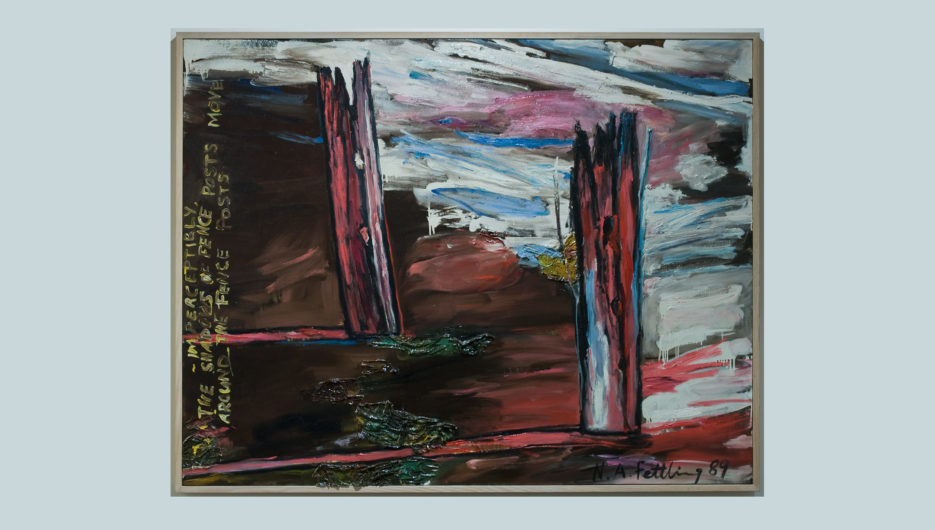
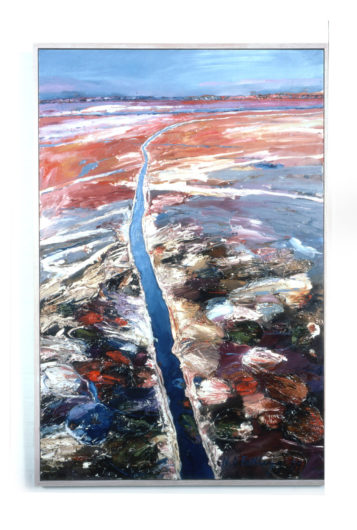
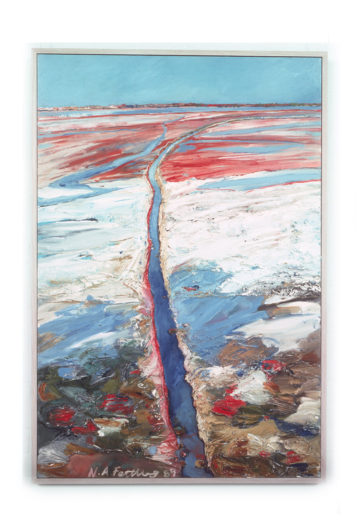

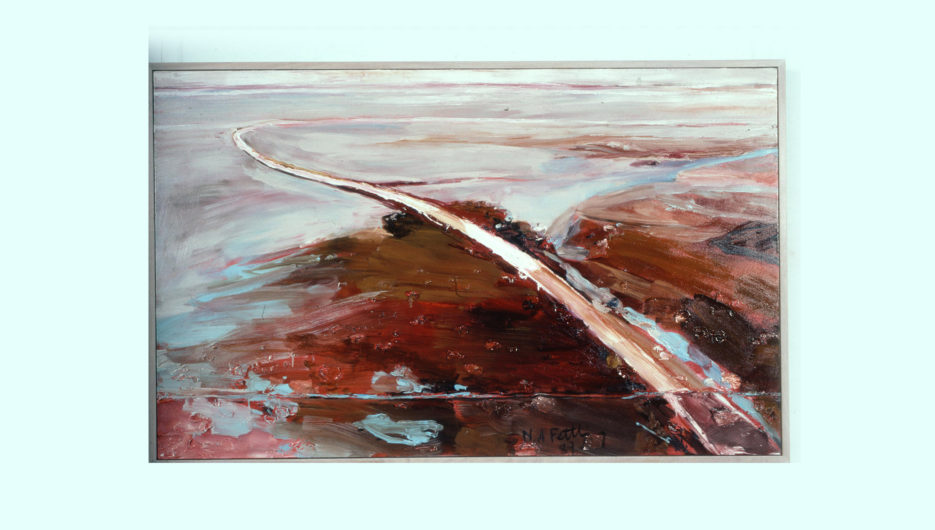
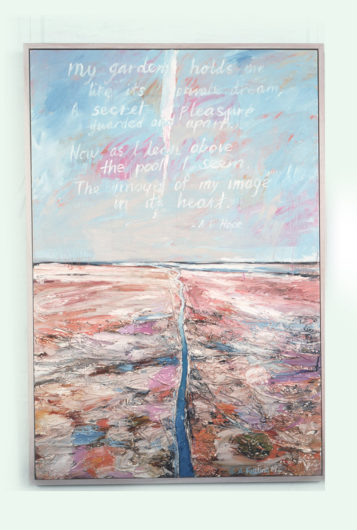
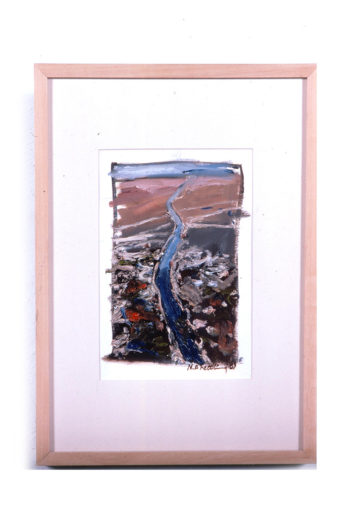
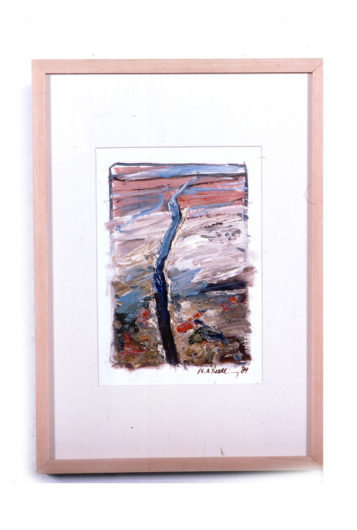






Categorised in: All works, In footer
This post was written by Alex Fettling